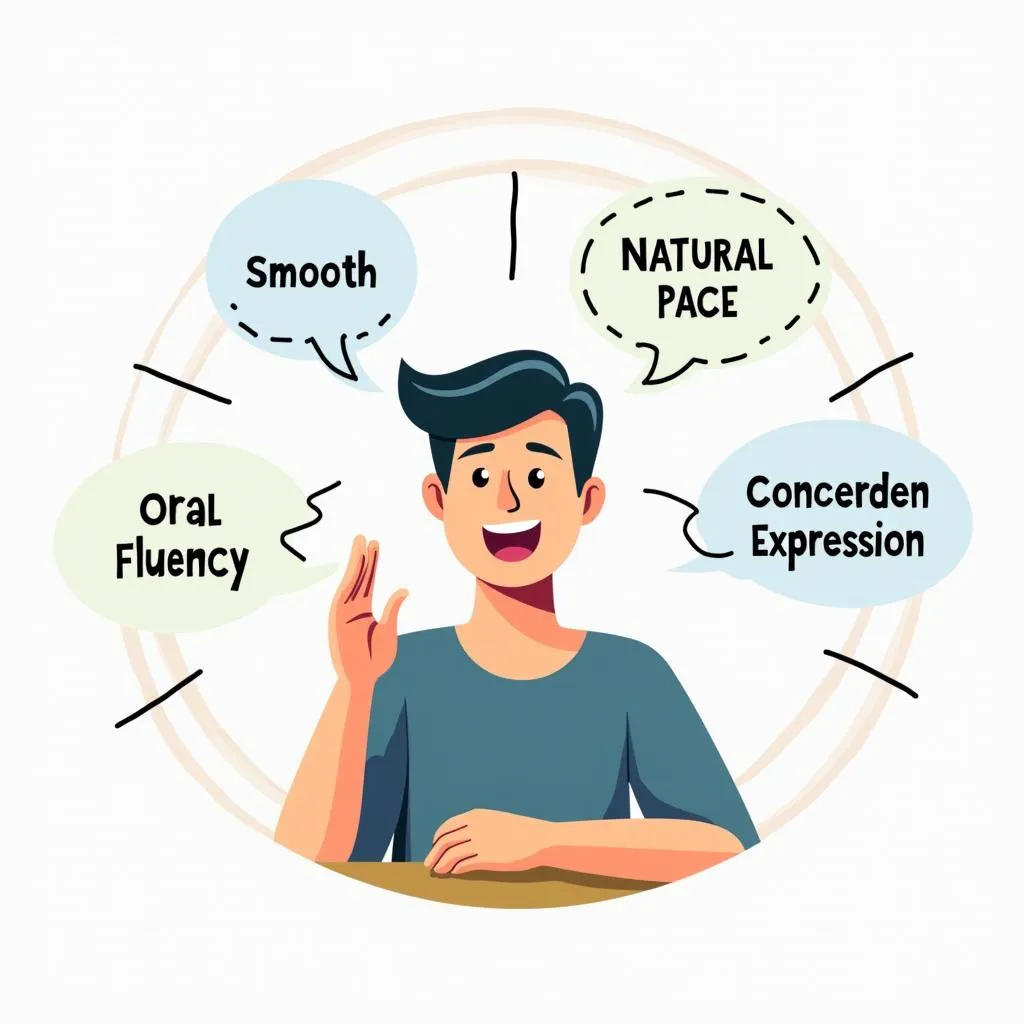Mastering oral fluency is crucial for achieving a high score in the PTE Academic exam. Whether you’re struggling with speaking confidently or looking to refine your skills, this guide will provide you with effective techniques to enhance your oral fluency. Let’s dive into the strategies that can help you excel in the PTE academic speaking module format.
Understanding Oral Fluency in PTE
Before we delve into improvement strategies, it’s essential to grasp what oral fluency means in the context of PTE. Oral fluency refers to your ability to speak smoothly, coherently, and at a natural pace without excessive hesitation or pauses.
Why Oral Fluency Matters
Oral fluency is a key scoring criterion in the PTE speaking section. It directly impacts your overall performance and can significantly influence your chances of meeting the PTE academic score requirements for your desired institution.
 Importance of Oral Fluency in PTE
Importance of Oral Fluency in PTE
10 Strategies to Improve Your Oral Fluency for PTE
- Practice Daily Speaking Exercises
Consistency is key when it comes to improving oral fluency. Set aside at least 30 minutes each day for speaking practice. You can use PTE practice materials, news articles, or even engage in conversations with language exchange partners.
- Record and Listen to Yourself
Recording your speech and listening back to it can help you identify areas for improvement. Pay attention to your pace, pronunciation, and any filler words you may be using.
- Shadow Native Speakers
Shadowing involves listening to native English speakers and repeating what they say in real-time. This technique helps you internalize natural speech patterns and improve your rhythm and intonation.
- Expand Your Vocabulary
A rich vocabulary allows you to express yourself more fluently. Work on expanding your word bank by learning new words and phrases daily. Focus on vocabulary relevant to common PTE topics.
 Techniques for Expanding PTE Vocabulary
Techniques for Expanding PTE Vocabulary
- Use Filler Words Strategically
While it’s best to minimize filler words, using them strategically can help maintain fluency when you need a moment to gather your thoughts. Practice using phrases like “Well,” “You see,” or “In other words” to bridge gaps in your speech.
- Master Transition Phrases
Smooth transitions between ideas contribute significantly to oral fluency. Learn and practice using transition phrases such as “Moreover,” “On the other hand,” and “In addition to” to connect your thoughts seamlessly.
- Improve Your Pronunciation
Clear pronunciation is crucial for fluency. Focus on challenging sounds in English and practice tongue twisters to improve your articulation. Pay special attention to word stress and sentence intonation.
Dr. Emily Chen, a renowned PTE coach, emphasizes:
“Pronunciation is the foundation of oral fluency. By mastering the sounds of English, you’ll speak more confidently and naturally, which is exactly what PTE assessors are looking for.”
- Engage in Timed Speaking Exercises
Familiarize yourself with the time constraints of the PTE speaking tasks. Practice speaking on various topics within the given time limits to improve your pacing and ability to organize thoughts quickly.
- Learn to Paraphrase Effectively
Paraphrasing is a valuable skill that can help you maintain fluency when you’re stuck on a specific word or phrase. Practice expressing ideas in different ways to build this skill.
 Effective Paraphrasing Techniques for PTE
Effective Paraphrasing Techniques for PTE
Be aware of common mistakes that can hinder oral fluency, such as speaking too slowly, overusing filler words, or long pauses in PTE speaking. Identify your personal stumbling blocks and work on overcoming them.
Implementing These Strategies Effectively
To make the most of these strategies, create a structured practice plan. Dedicate specific time slots to each technique and track your progress. Remember, improvement takes time and consistent effort.
Sarah Thompson, a successful PTE candidate, shares her experience:
“I found that combining daily speaking practice with focused vocabulary exercises dramatically improved my oral fluency. It’s about creating a routine and sticking to it, even on days when you don’t feel motivated.”
Conclusion
Improving your oral fluency for PTE success is a journey that requires dedication and the right approach. By implementing these 10 proven strategies and consistently practicing, you’ll be well on your way to achieving the fluency needed for a high PTE score. Remember to focus on natural speech, expand your vocabulary, and address your specific weak points. With perseverance and these techniques, you’ll see significant improvements in your oral fluency for PTE success.
FAQs About Improving Oral Fluency for PTE
-
How long does it typically take to improve oral fluency for PTE?
Improvement time varies, but with consistent daily practice, most students see noticeable progress within 4-6 weeks. -
Can I improve my oral fluency by watching English movies and TV shows?
Yes, watching English media can help, especially when combined with active learning techniques like shadowing dialogues. -
Are there any specific PTE vocabulary practice exercises that can boost oral fluency?
Yes, exercises focusing on collocations, idiomatic expressions, and academic vocabulary can significantly enhance your oral fluency. -
How can I practice oral fluency if I don’t have a speaking partner?
You can use language exchange apps, join online PTE study groups, or practice speaking aloud to yourself using PTE prompts. -
Is it better to speak quickly or accurately for good oral fluency in PTE?
A balance is key. Aim for a natural pace with accurate pronunciation rather than rushing through your speech.